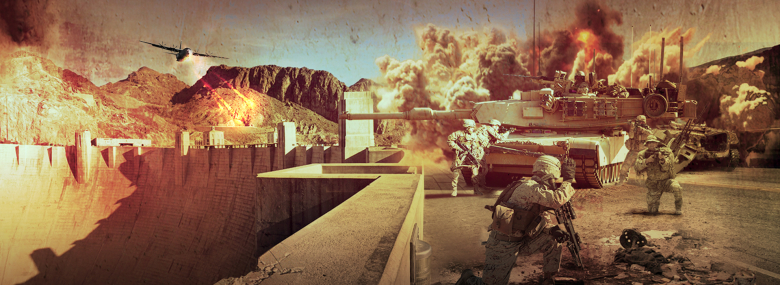
Commanders!
Update 0.31 that is coming in the second half of February will bring a new contract season along with a brand new reward – the Type 89 Tier 7 Premium Armored Fighting Vehicle from Japan. But, before we get to the vehicle itself, let us discuss the contract mechanics and changes first.
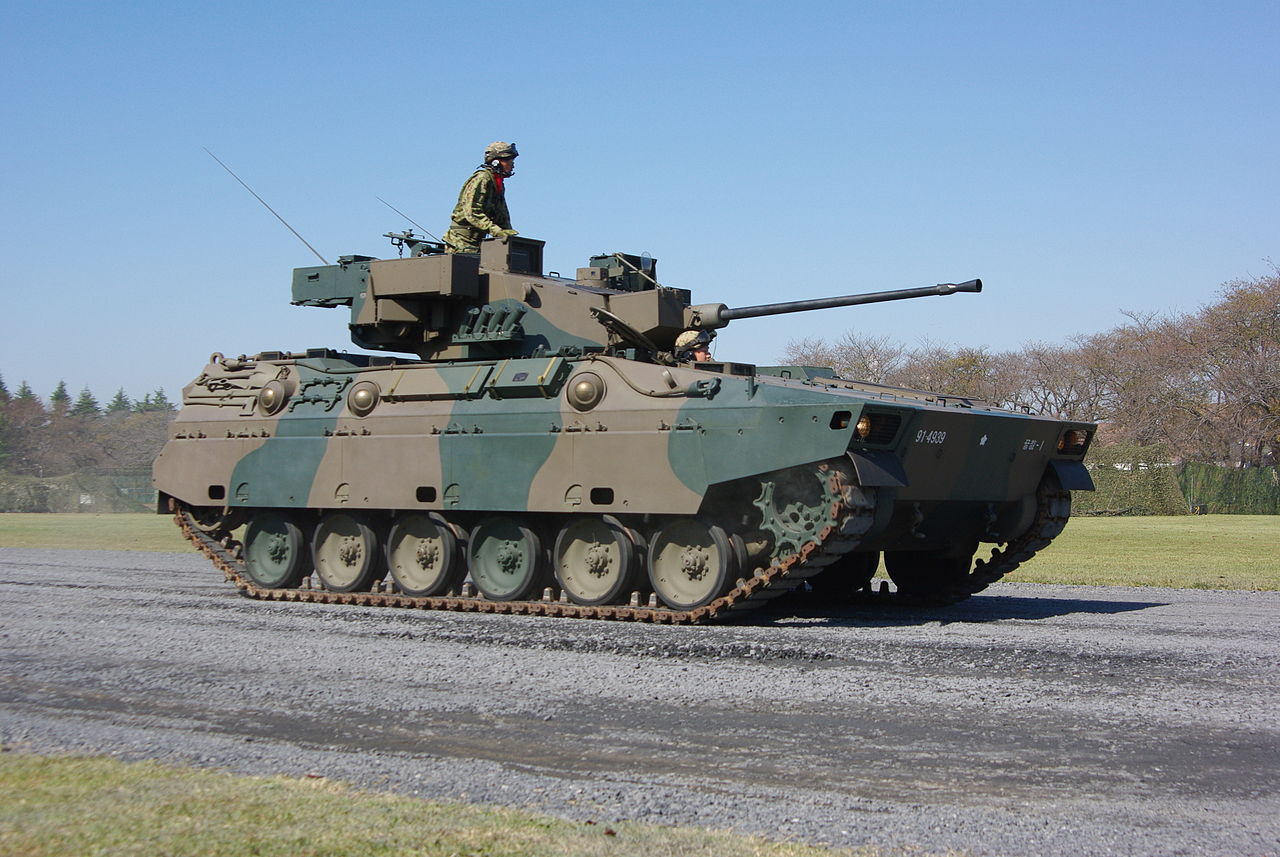
Type 89
Or, more specifically, the lack thereof. We are quite happy with the way the American Dream Contract Mission campaign turned out with the first contract prize being the vehicle itself and the following ones consisting of seasonal Loot Crates. That is why we will not be making any major changes apart from tweaking several missions and fixing a few bugs that were left unaddressed. The requirements will be tuned down a bit to reflect the reduction of the main prize Tier.
With that being said, let’s take a look at the main prize itself – the Type 89 IFV.
This vehicle is one of those rather unassuming vehicles that sort of pass through history unnoticed. It was never exported or saw combat, it’s just your typical late Cold War era western IFV with some interesting aspects, but nothing that would make history books. It has one rather unique characteristic though, which we’ll talk about in a moment.
The Type 89, much like other western designs of the same class, came to be as a replacement for the obsolete APCs (in this case, Type 60 and Type 73) that were designed to be deployed with the Battle Taxi doctrine in mind, under which, simply put, a lightly armored and poorly armed APC carries the troops to the front, drops them and retreats. The post-war Japanese military – established specifically as a defense force only – was, of course, heavily influenced by the Americans as well as the rest of the world and it was therefore only logical for them to follow the world trends.
With the appearance of such vehicles as the Soviet BMP-1, the era of the IFV has truly begun and the Japanese did not want to stay behind, even though, due to various constraints – likely of monetary and political nature – the development of such an indigenous machine came later than in some other western countries.
The IFV requirement for Japanese domestic use was first formulated around 1980. What followed were three or so years of procurement talks, culminating with a contract for Mitsubishi to build four prototypes in 1984. During the next several years, several prototypes were built and tested successfully. The vehicle was then officially accepted in service in 1989 under the designation Type 89 IFV.
The Type 89 IFV weighs 27 tons and carries the crew of 3 men (gunner, commander and driver) along with 7 troops in the back.
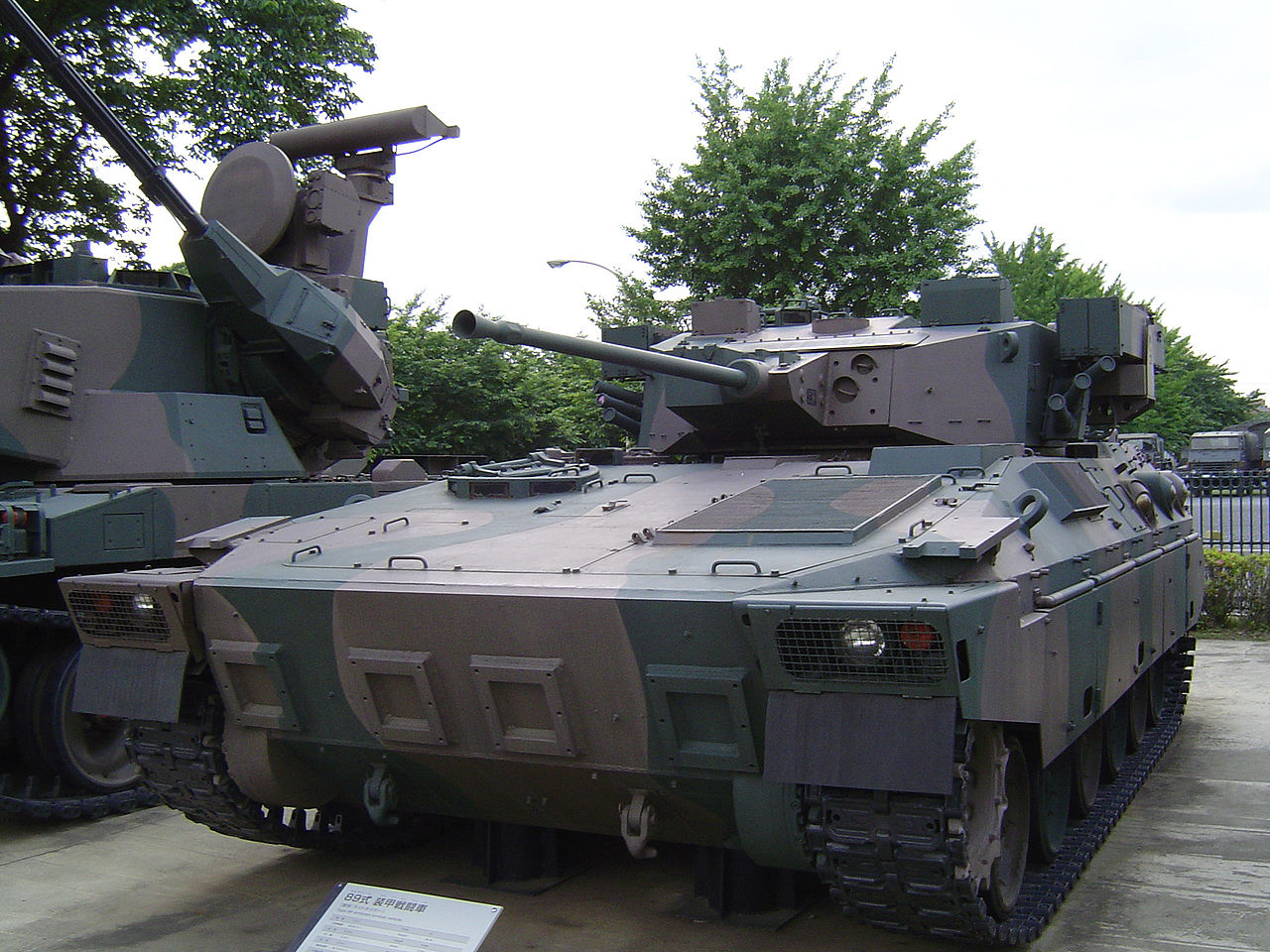
Prototype of Type 89
As protection goes, the Type 89 is remarkably thin-skinned and thus very vulnerable to any sort of threat. The basic armor is steel only and protects the vehicle from small arms only (approximately STANAG 4569 Level 3 – protection against 7.62mm AP bullets). Some sources incorrectly state that the armor is made of aluminum, but it seems that while it in fact does have some sort of aluminum liner inside, the main armor is indeed made of steel.
The vehicle does, however, have some additional protection elements, including:
- Laser warning system
- NBC protection system
- Smoke grenade launchers
The Type 89 is powered by the Mitsubishi 6SY31WA turbocharged diesel inline six-cylinder 3.1 liter engine that is producing some 600hp. It is paired with a Hitachi automatic transmission and allows the vehicle to go as fast as 70 km/h. Of particular note is its high maximum reverse speed of 42 km/h but, generally speaking, the Type 89 is not all that fast off-road and, despite its appearance, it is not amphibious.
And last but not least, there’s the firepower. The Type 89 IFV has two weapon systems – a 35mm Oerlikon-Contraves automatic cannon and a pair of Jyu-MAT ATGMs.
The Swiss 35mm L/90 KDA automatic cannon is license-produced in Japan. It has a duel feed system, which means that it can switch between ammunition types almost instantly. The ammunition (217 rounds) is stored in the back of the turret. It is fully stabilized, its rate of fire is 200 rounds per minute, it can elevate to 60 degrees and depress to 9 degrees. The gun is controlled by a FCS that does by all accounts not seem to be very advanced (contrary to what the reputation of Japan as a technological superpower might suggest) and should be roughly on par with an early Bradley one.
The gun fires two types of 35x228mm Oerlikon ammunition:
- APDS (1385 m/s, 110mm at 100m penetration or 90mm at 1000m – some sources claim 100mm at 2000m but this is unlikely)
- HE-I (1175 m/s, 112g of explosive charge)
The Jyu-MAT missile system is not extremely advanced either and is roughly on par with a 1980s TOW. Much like TOW, these missiles (also referred to as KAM-9) are wire-controlled and the operator has to be aiming at the target for the entire duration of their flight.

Type 89 launching a Jyu-MAT missile
These 152mm diameter missiles weigh 15.7kg each, have the range of roughly 4km, their flight velocity is 200 m/s and are available with two types of warheads:
- Standard HEAT (roughly 400-450mm of penetration)
- SAP-FRAG (semi-armor piercing with fragmentation – low penetration but deadly anti-manpower effect, intended against Soviet or Chinese landing vessels)
It’s worth noting that the launchers (one per each side of the turret) do not depress or elevate – instead, they simply elevate slightly and then launch the missile.
All in all, the vehicle is rather unremarkable. What is remarkable, however, is what happened after 1989.
Initially, 300 vehicles of this type were ordered but, with the collapse of the Soviet Union (this was, of course, well before the current rise of China), the need to build a large number of IFVs all but evaporated. Combined with the Japanese economic recession of the early 1990s, it would seem that the cancelation of the program was all but inevitable. But, that didn’t happen.
Instead, Japan chose to build a relatively small number of these IFVs (68 to be exact) between 1989 and 2004 with the rate of 8 (1989) to mere 1-2 pieces (2004) per year. This drove the unit price of Type 89 to incredible heights and, at roughly 5 million USD per unit (to compare, a Bradley costs roughly 3 million USD per unit), it is currently the most expensive IFV ever mass-produced, anywhere.
It is assumed that the Japanese did that simply to keep the plant alive and the workers there employed but the costs were nevertheless staggering, even for the Japanese. The plan to replace the older APCs mostly failed due to budget restraints and the older APCs remain in service, waiting to be replaced by a next generation vehicle. As for the Type 89, an artillery piece (Type 99 155mm SPH) was developed from it in the 1990s and joined it in service by 1999 with around a hundred built.
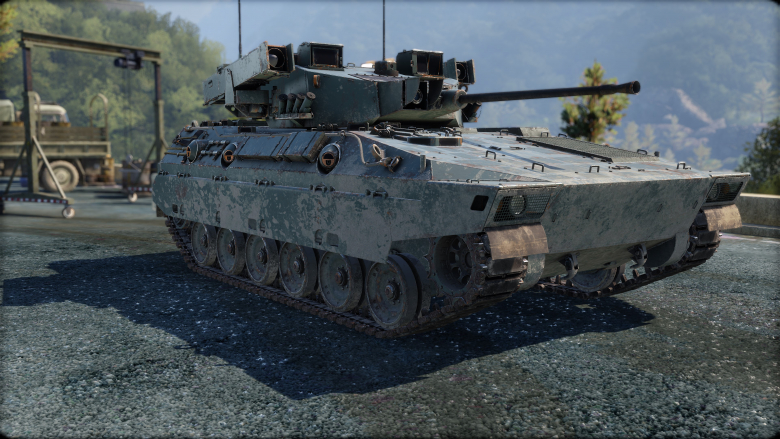
Click the image to open a larger version
In Armored Warfare, the Type 89 will be a Tier 7 Premium AFV that will be, in terms of gameplay, a relatively poorly protected but highly mobile infantry fighting vehicle with some quite serious firepower.
As usual, let’s take a look at its armor first. Simply put, there will be very little of it – hardly any at all. The basic hull only protects the vehicle from machineguns and low-Tier autocannons, but that’s about it. There will not be any APS available or an ERA kit to mitigate incoming ATGMs. The only thing available will be a special spall liner increasing the protection of internal modules.
Type 89’s mobility will start as average thanks to its 600hp Mitsubishi engine with the maximum speed being 70 km/h. However, there will be an option to upgrade it with by the means of additional progression – a special turbocharger module will be available, increasing its acceleration by 30 percent, its maximum speed by 10 percent and its hull traverse rate by 20 percent at the cost of engine module hitpoints. With this upgrade unlocked, the vehicle will become very fast and agile, one of the most mobile machines of its class and Tier.

Click the image to open a larger version
Type 89’s firepower will be excellent as well. With its 35mm Oerlikon autocannon capable of firing with 220 rounds per minute rate of fire from its 34 round magazine, it will have very little problem dealing with lighter targets or even some heavier ones – the penetration of 200mm for its armor-piercing rounds is nothing to scoff at. Additionally, the gun will have excellent elevation and depression values: +60 to -9 degrees.
But the true tank killing potential will come from a pair of Jyu-Mat ATGMs (one on each side of the turret). These 800mm penetration missiles will be possible to fire 3 seconds from each other, followed by 16 seconds of reload time. The vehicle will of course be able to carry infantry and will also have above average camouflage factor (30 percent) as well as view range (460m with Recon Package).
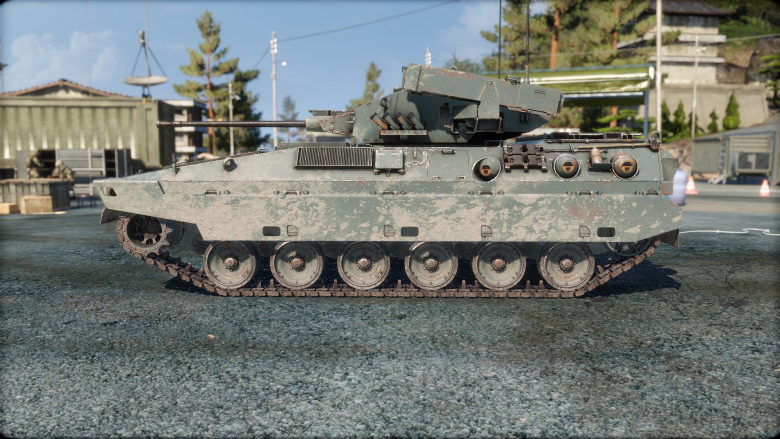
Click the image to open a larger version
All in all, you will get a fast and agile infantry deployment platform that will be more than capable to support its deployed troops by accurate fire of its autocannon and missiles. Its secondary task (or primary, if this is the playstyle you prefer) will be recon duty thanks to its excellent spotting capabilities. However, this vehicle should not find itself in close combat with the enemy – its thin armor cannot withstand such type of combat.
We hope that you will enjoy it and, as always:
See you on the battlefield!








